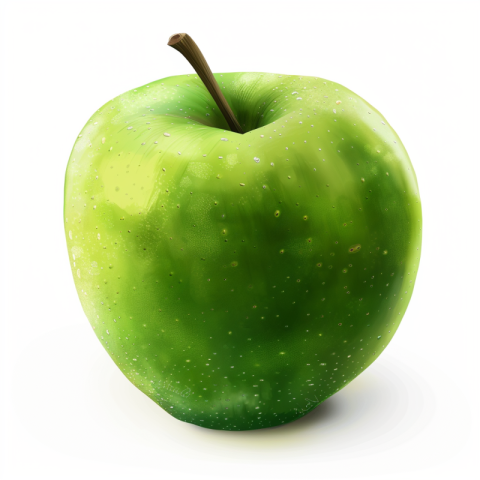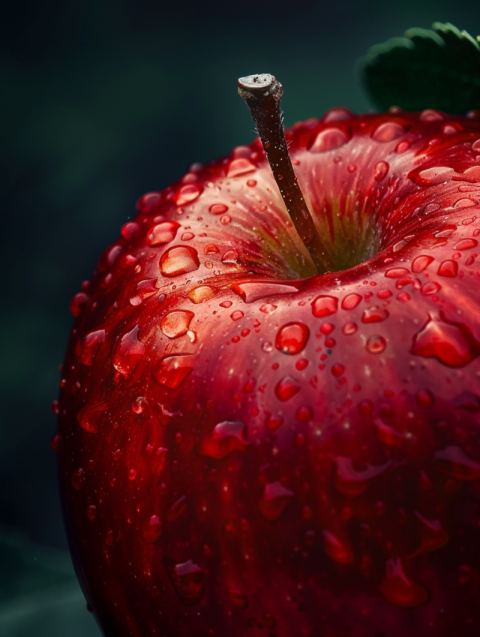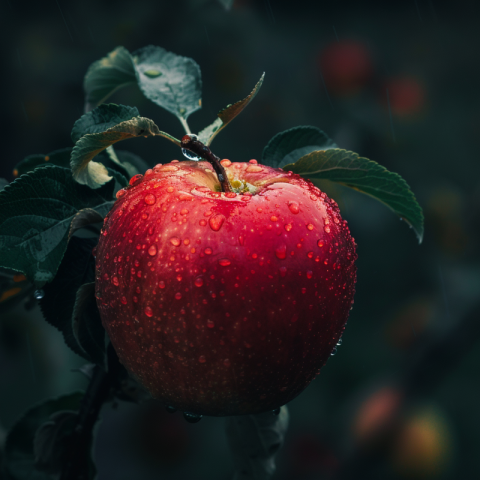











The Apple: A Fruit with a Rich History and Global Appeal - A Crispy Classic
The apple, a crisp and juicy fruit that grows on trees of the genus Malus, is one of the most widely cultivated and consumed fruits in the world. Its versatility, ranging from sweet to tart, its long storage life, and its adaptability to various climates have made it a staple food for centuries. From the classic Red Delicious to the tangy Granny Smith, apples offer a wide array of flavors and textures, and they play a significant role in various cuisines, cultures, and even mythology.
1. The Apple's Ancestry: From Central Asia to the World
The apple's origins can be traced back to Central Asia:
- The wild ancestor of the cultivated apple, Malus sieversii, is native to the mountains of Kazakhstan, Kyrgyzstan, Tajikistan, and Xinjiang, China.
- Apples have been cultivated for thousands of years, with evidence of apple consumption dating back to the Neolithic period.
- The Silk Road played a crucial role in disseminating apples westward to Europe.
- Apples were introduced to North America by European colonists in the 17th century.
2. Apple Varieties: A Spectrum of Flavors and Textures
There are thousands of apple varieties grown around the world, each with its own unique characteristics:
- Red Delicious: Known for its bright red skin and mild, sweet flavor. Not always considered the best for taste or texture.
- Gala: A crisp, sweet, and aromatic apple with a yellow-red striped skin.
- Fuji: A very sweet and crisp apple with a dense flesh, originally from Japan.
- Granny Smith: A tart, crisp green apple, often used in baking.
- Honeycrisp: Known for its exceptionally crisp texture and balanced sweet-tart flavor.
- Golden Delicious: A yellow apple with a sweet and mellow flavor.
- McIntosh: A tender, slightly tart apple with a red and green skin.
- Pink Lady: A crisp and tangy apple with a distinctive pink blush.
- Braeburn: Firm and crisp with a sweet-tart flavor.
3. Nutritional Value: An Apple a Day Keeps the Doctor Away
Apples are a nutritious fruit, offering a range of health benefits:
- Fiber: Apples are a good source of dietary fiber, particularly pectin, which can aid digestion, promote satiety, and help regulate blood sugar levels.
- Vitamins: Apples contain vitamin C, an antioxidant that supports immune function, as well as smaller amounts of vitamin K and some B vitamins.
- Minerals: They provide potassium, an electrolyte that helps regulate blood pressure.
- Antioxidants: Apples contain various antioxidants, including flavonoids like quercetin, which may help protect against chronic diseases.
4. Culinary Uses: From Snacks to Desserts
Apples are incredibly versatile in the kitchen:
- Fresh Eating: Apples are a delicious and refreshing snack on their own.
- Baking: Apples are a key ingredient in many baked goods, including pies, crisps, crumbles, cakes, and muffins.
- Sauces: Applesauce is a popular side dish or ingredient in various recipes.
- Salads: Sliced or diced apples add sweetness and crunch to salads.
- Juice and Cider: Apples are used to make apple juice and apple cider, both non-alcoholic and alcoholic (hard cider).
- Vinegar: Apple cider vinegar is made from fermented apple juice.
5. Apple Symbolism: Mythology, Folklore, and Culture
The apple has held symbolic meaning in various cultures and throughout history:
- In the Bible: The apple is often associated with the forbidden fruit in the Garden of Eden, although the specific type of fruit is not mentioned in the text.
- Greek Mythology: The golden apple of discord played a role in the events leading up to the Trojan War.
- Norse Mythology: Apples were associated with youth and immortality.
- Folklore: Johnny Appleseed is a legendary figure in American folklore who is said to have planted apple trees across the frontier.
- Expressions: "An apple a day keeps the doctor away," "apple of my eye."
6. Growing Apples: A Global Industry
Apple trees are grown in temperate climates around the world:
- Major apple-producing countries include China, the United States, Turkey, Poland, and India.
- Apple orchards require careful management, including pruning, pest and disease control, and irrigation.
- Apples are typically harvested in the fall.
7. The Future of Apples
- Researchers are developing new apple varieties with improved disease resistance, longer storage life, and enhanced flavor profiles.
- There is a growing interest in heirloom apple varieties, which offer unique flavors and genetic diversity.
- Climate change poses challenges to apple production, as changing temperatures and weather patterns can affect tree growth and fruit quality.
Conclusion:
The apple, with its crisp texture, refreshing flavor, and rich history, is a truly remarkable fruit. From its origins in Central Asia to its global cultivation and widespread popularity, the apple has become a staple food, a cultural symbol, and a source of culinary inspiration. Whether enjoyed fresh, baked into a pie, or pressed into cider, the apple offers a delicious and nutritious way to savor the bounty of nature. As we continue to explore the vast diversity of apple varieties and their culinary uses, the apple's enduring appeal is sure to continue for generations to come.
Apple, apples, apple varieties, types of apples, apple recipes, apple pie, apple crisp, apple crumble, applesauce, apple juice, apple cider, apple cider vinegar, apple nutrition, apple benefits, Red Delicious, Gala, Fuji, Granny Smith, Honeycrisp, Golden Delicious, McIntosh, Pink Lady, Braeburn, Gala, history of apples, growing apples, apple orchard, apple picking, apple tree, apple blossom, Johnny Appleseed, apple facts, apple nutrition facts, health benefits of apples, organic apples, where to buy apples.

